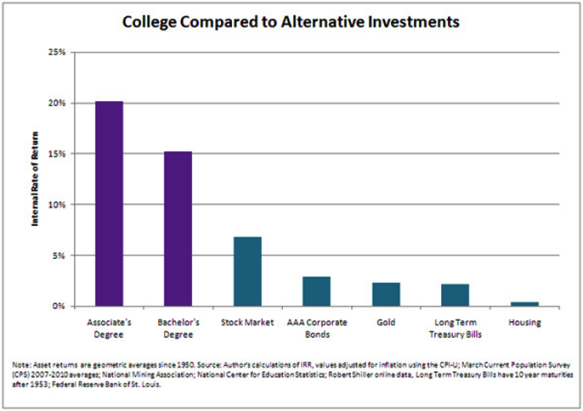All students should graduate from high school ready for college, careers, and citizenship.

It is no secret that there is a skills gap in America. Employers are concerned about the ability of our graduates' to think critically, communicate well and perform basic tasks in mathematics and other important areas. Employers estimate that 39% of recent high school graduates with no further education are unprepared for the expectations that they face in entry-level jobs. At the same time, employers find themselves unable to fill open positions even as the unemployment rate continues to hover around 9%. It is estimated that there are at least four unemployed individuals for every new job opening, largely because of this skill gap.
The college- and career-ready agenda has always been a jobs—and equity—agenda with the goal of providing all students with the foundational knowledge and skills they need to be successful. Americans need higher-level skills to obtain and succeed in the 21st century economy and raising expectations in K-12 will provide the academic foundation students need to obtain those skills. Despite the mounting evidence, there continues to be some resistance to the college- and career-ready agenda, largely stemming from a misunderstanding that it means that all students should go to four-year colleges. In fact, being "college- and career- ready" is about graduates having options and choosing their own career path. To do so, graduates must leave high school ready—that is, without the need for remediation—for additional education and/or training whether that is at a community college, technical college, apprenticeship or certificate program or a four- year college degree.
Another common concern is that it's unfair to push students to pursue additional education given the rising costs of higher education. Yet, recent research hones in on the economic returns of postsecondary education and training, and finds them to be significant, even accounting for tuition and opportunity costs of being in school. Where is the Best Place to Invest $102,000 — In Stocks, Bonds, or a College Degree?, a new paper just released by the Hamilton Project, an economic growth and advocacy arm of the Brookings Institution, estimates that the average college graduate earns, over their lifetime, $570,000 more than an individual with only a high school diploma. In other words, an investment in postsecondary education yields a five-fold return on investment—far exceeding the return on traditional investments, such as stocks, bonds and real estate.

SOURCE: Greenstone, Michael and Adam Looney. Where is the Best Place to Invest $102,000? The Hamilton Project, the Brooking Institution (June 25, 2011).
Building on this, The Undereducated American, a new study published by Georgetown University's Center on Education and the Workforce, estimates that in order to keep pace with increased demand for college-educated workers in the labor market, the U.S. will need to produce 20 million more college graduates by the year 2025. That means, of course, we'll need to do a far better job of producing high school graduates who are truly college and career-ready.
The simple fact is that education matters, and a high school diploma is rarely enough to ensure access to 21st century jobs. For that, high school grads need to be prepared for the additional postsecondary training and education it will take to succeed.
